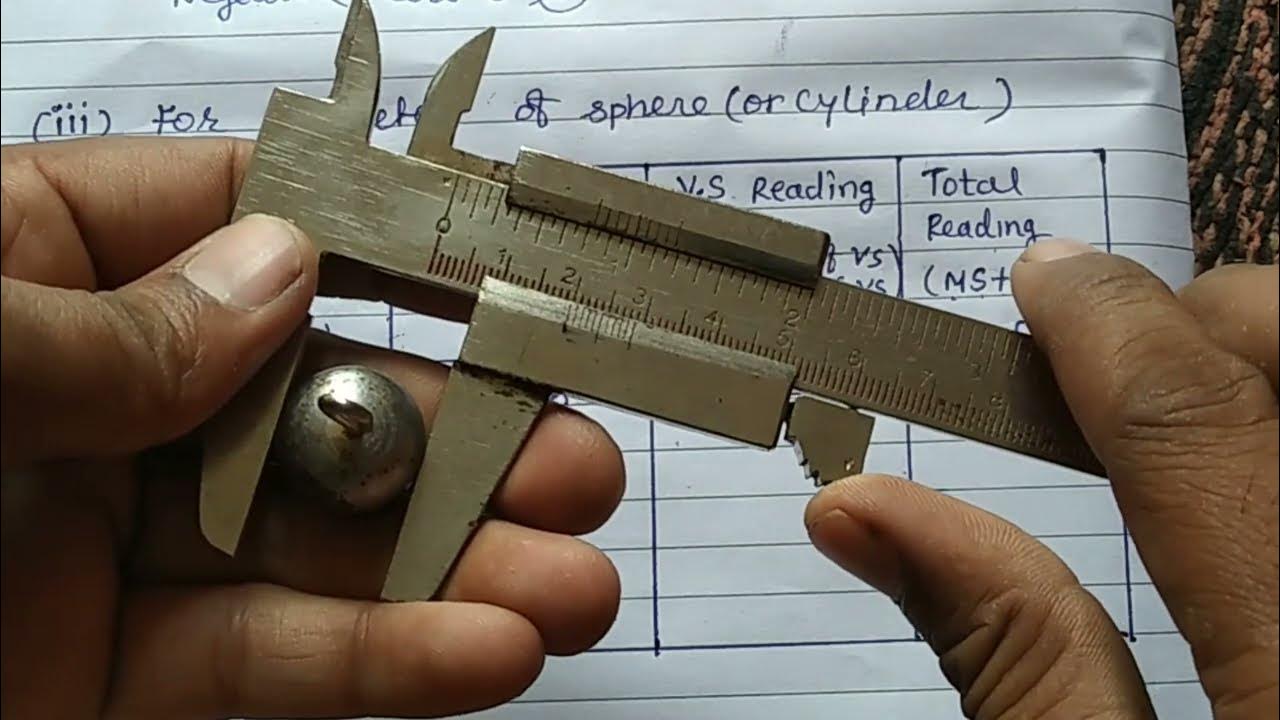Medida de longitudes con el pie de rey
Summary
TLDRThis video explains the function and usage of the 'pie de Rey' or Vernier caliper, an instrument used to measure thicknesses and dimensions of complex objects. It describes the mechanics of the nonius system, explaining how the scale divisions work together to provide precise measurements, including the calculation of sensitivity. The video also covers practical applications, such as measuring the diameter and generatrix of a cylinder and determining the volume of an annular object, while emphasizing error analysis in measurements.
Takeaways
- 😀 The vernier caliper, or 'pie de Rey,' is a precision instrument used to measure the thickness of objects and both interior and exterior dimensions of complex shapes.
- 😀 The nonius scale consists of two parts: a fixed scale (rule) and a movable scale (reglilla), which are calibrated to work together.
- 😀 The nonius works by having 'n' divisions on the reglilla coincide with 'n-1' divisions on the rule, allowing for precise measurement.
- 😀 In the example discussed, 10 divisions of the reglilla match 9 divisions of the rule, meaning 'n' is 10.
- 😀 The size of the divisions on the rule is denoted as 't,' and the size of the divisions on the reglilla as 'd.'
- 😀 For a rule division size of 1 mm, the reglilla's division size can be calculated, resulting in 0.9 mm for the example in question.
- 😀 The sensitivity of the nonius is the size of the rule's divisions divided by the number of reglilla divisions, which in this case results in a sensitivity of 0.1 mm.
- 😀 To measure an object's length, align the rule's zero with one end and slide the reglilla until its zero aligns with the opposite end. The total measurement is the sum of the value from the rule and the additional measurement from the reglilla.
- 😀 In a practical example, if the rule reads 7 mm and the reglilla's 4th division aligns with the rule, the measurement is 7.4 mm.
- 😀 The pie de Rey's sensitivity is calculated similarly, with 50 reglilla divisions corresponding to 49 rule divisions, resulting in a sensitivity of 0.02 mm.
- 😀 To calculate the volume of a cylinder or ring, measure the interior and exterior diameters and thickness using the pie de Rey, noting both the values and their absolute errors.
Q & A
What is a pie de Rey (or caliber)?
-A pie de Rey is an instrument based on the Nonius that is used to measure the thicknesses of pieces as well as the interior and exterior dimensions of complex bodies.
What are the two scales in a Nonius caliper called?
-The two scales are the fixed scale, known as the 'regla' (rule), and the movable scale, called the 'reglilla'.
How are the scales of the Nonius graduated?
-The scales are graduated in such a way that 'n' divisions of the reglilla coincide with 'n-1' divisions of the regla. In the example shown, 10 divisions of the reglilla coincide with 9 divisions of the regla.
What does 'n' represent in the context of the Nonius scale?
-'n' represents the number of divisions on the reglilla scale. In the example used, 'n' equals 10.
How do you calculate the size of the divisions on the reglilla scale?
-The size of the divisions on the reglilla scale can be calculated by dividing the size of the divisions of the regla by 'n', the number of divisions on the reglilla.
If the size of the divisions on the regla is 1 mm, what is the size of the divisions on the reglilla?
-If the divisions on the regla are 1 mm and n equals 10, the size of the divisions on the reglilla will be 0.9 mm.
What is the sensitivity of the Nonius caliper?
-The sensitivity of the Nonius is the size of the divisions on the regla divided by the number of divisions on the reglilla. In this example, the sensitivity is 0.1 mm.
How do you take a measurement using the Nonius caliper?
-To measure the length of an object, align the zero of the regla with one end of the object. Then, move the reglilla until its zero coincides with the other end. The reading is obtained by noting the distance on the regla and adding the value indicated by the reglilla.
What is the process for measuring with the pie de Rey when the sensitivity is 0.02 mm?
-When using the pie de Rey, if 50 divisions of the reglilla coincide with 49 divisions of the regla, the sensitivity is 0.02 mm. The reading is taken by observing which division of the reglilla aligns with the regla and multiplying by the sensitivity.
How do you calculate the volume of a cylinder using the pie de Rey?
-To calculate the volume of a cylinder, measure the diameter of its base and the value of its generatrix (height) with the pie de Rey. Then, use the formula for the volume of a cylinder (πr²h) and account for any measurement errors.
Outlines

This section is available to paid users only. Please upgrade to access this part.
Upgrade NowMindmap

This section is available to paid users only. Please upgrade to access this part.
Upgrade NowKeywords

This section is available to paid users only. Please upgrade to access this part.
Upgrade NowHighlights

This section is available to paid users only. Please upgrade to access this part.
Upgrade NowTranscripts

This section is available to paid users only. Please upgrade to access this part.
Upgrade NowBrowse More Related Video

Cara Menggunakan + Menghitung Jangka Sorong

Vernier Callipers Experiment Introduction Edunovus Online Smart Practicals

How to Read a Metric Vernier Caliper

Pengukuran | Jangka Sorong | IPA Kelas 7 SMP/MTs | EDURAYA MENGAJAR

S01E02 - BELAJAR ALAT UKUR VERNIER CALIPER

how to find the diameter of spherical/cylindrical body using vernier caliper/class11experiment 1 phy
5.0 / 5 (0 votes)